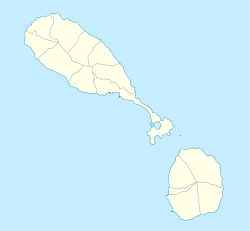
Saint Kitts and Nevis, officially the Federation of Saint Kitts and Nevis, is an island country consisting of the two islands of Saint Kitts and Nevis, both located in the West Indies, in the Leeward Islands chain of the Lesser Antilles. With 261 square kilometres (101 sq mi) of territory, and roughly 48,000 inhabitants, it is the smallest sovereign state in the Western Hemisphere, in both area and population, as well as the world's smallest sovereign federation. The country is a Commonwealth realm, with Charles III as King and head of state.
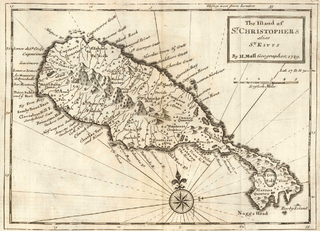
Saint Kitts and Nevis have one of the longest written histories in the Caribbean, both islands being among Spain's and England's first colonies in the archipelago. Despite being only two miles apart and quite diminutive in size, Saint Kitts and Nevis were widely recognized as being separate entities with distinct identities until they were forcibly united in the late 19th century.
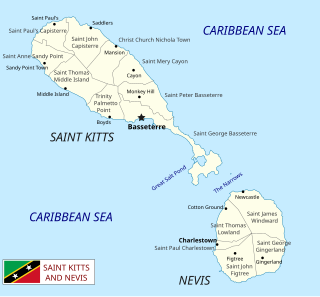
Saint Kitts and Nevis is a twin island country with a total landmass of just 270 square kilometres (104 sq mi). The island of St. Kitts, the larger of the two, is 180 square kilometres (68 sq mi) in size and is located at latitude 17.30 N, and longitude 62.80 W. Nevis is 93 square kilometres (36 sq mi) and located at latitude 17.10 N, longitude 62.35 W, approximately 3 km south-east of St. Kitts. The islands are about one-third of the way from Puerto Rico to Trinidad and Tobago. The islands are volcanic and mountainous.

The politics of Saint Kitts and Nevis takes place in the framework of a federal parliamentary democracy. Saint Kitts and Nevis is an independent Commonwealth realm with Charles III as its head of state, viceregally represented by a Governor-General. He acts on the advice of the prime minister, who is the majority party leader in the National Assembly, and who, with a cabinet, conducts affairs of state.

Saint Kitts, officially Saint Christopher, is an island in the West Indies. The west side of the island borders the Caribbean Sea, and the eastern coast faces the Atlantic Ocean. Saint Kitts and the neighbouring island of Nevis constitute one country: the Federation of Saint Kitts and Nevis. Saint Kitts and Nevis are separated by a shallow 3-kilometre (2 mi) channel known as "The Narrows".

The economy of Saint Kitts and Nevis has traditionally depended on the growing and processing of sugar cane; decreasing world prices have hurt the industry in recent years. Tourism, export-oriented manufacturing, and offshore banking activity have assumed larger roles in Saint Kitts and Nevis. Most food is imported. The government has undertaken a program designed to revitalize the faltering sugar sector. It is also working to improve revenue collection in order to better fund social programs. In 1997, some leaders in Nevis were urging separation from Saint Kitts on the basis that Nevis was paying far more in taxes than it was receiving in government services, but the vote on secession failed in August 1998. In late September 1998, Hurricane Georges caused approximately $445 million in damages and limited GDP growth for the year.

Palmer Trinity School is an independent, college-preparatory, coeducational Episcopal day school located on 60 acres in Palmetto Bay, Florida. The school currently enrolls 800 students in grades 6–12.
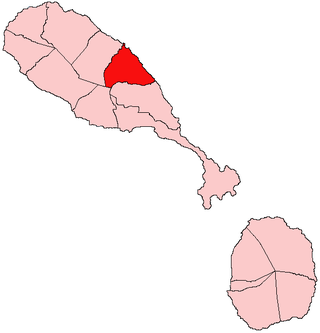
Saint Mary Cayon is one of 14 administrative parishes that make up Saint Kitts and Nevis. It is located on the main island of Saint Kitts and the parish capital is Cayon.
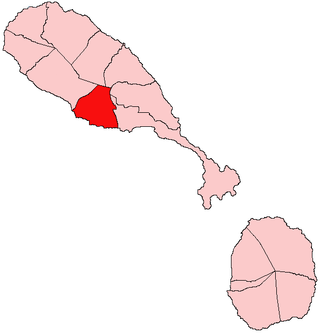
Trinity Palmetto Point is one of 14 administrative parishes that make up Saint Kitts and Nevis. It ranks 6th in terms of size of all the parishes on Saint Kitts. The parish capital is Trinity.

Old Road Town is a town located on the west coast of Saint Kitts island in Saint Kitts and Nevis. It is in Saint Thomas Middle Island Parish, and just to the east of Middle Island town. Its current population is estimated at 1,647.
Boyds, also spelt Boyd's, is a village on the island of Saint Kitts in Saint Kitts and Nevis. It is the largest village in the Trinity Palmetto Point Parish, with 709 inhabitants, and is the 16th largest settlement in St. Kitts and Nevis.
Bloody Point is a headland in Trinity Palmetto Point Parish, Saint Kitts. The Stone Fort or Bloody River runs towards Bloody Point. In 1626, European colonists massacred 2,000 Kalinago people at Bloody Point.

The coat of arms of Saint Kitts and Nevis was adopted in 1983 and possesses the motto "Country Above Self". The previous coat of arms, adopted in 1967 by the colony of Saint Christopher-Nevis-Anguilla, was nearly identical, except for coloration and the motto "Unity in Trinity".
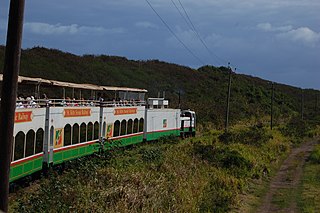
St. Kitts Scenic Railway is a 29 kilometres (18 mi) long narrow-gauge railway line along the coastline of the island of St. Kitts in the eastern Caribbean, with a track gauge of 762 mm.
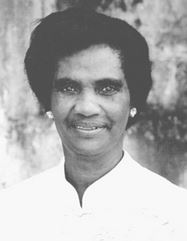
Mary Charles George O.B.E. was a Kittitian educator. She taught school in St. Kitts for 43 years before moving to the Virgin Islands, where she taught for another decade. She was the first woman in St. Kitts and Nevis to run for public office. For her contributions to education in the Caribbean, she was honoured with the Order of the British Empire from Queen Elizabeth II and granted a life membership in the Caribbean Union of Teachers. A hospital in Molyneux, Saint Kitts, and the teaching excellence award of the St. Kitts Teachers’ Union are named in her honour.

Sir Milton Pentonville Allen OBE was the Governor of Saint Christopher-Nevis-Anguilla from 1969 to 1975. He was a native of Saint Kitts, and was a journalist and politician before being appointed governor.
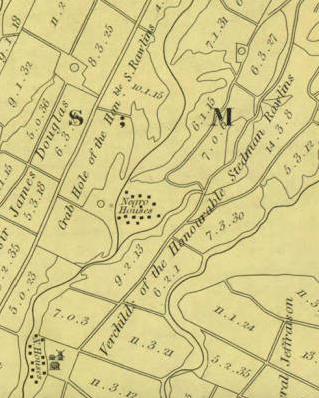
Hon. Stedman Rawlins was a slaveholder and sugar plantation owner, and the President of His Majesty's Council, on the Caribbean island of St. Christopher.
